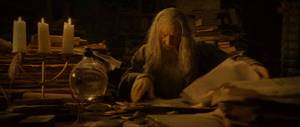It's that time of month again, when the doors are opened on the Grumble Jones Library and we take a peak at the volumes contained therein. This month, we'll look at three titles that have been very impactful on me both from a historical perspective as well as inspiration for ASL.
The first of these impactful tomes, is Lt. Col A.J. Barker's excellent AFRIKA KORPS. This particular book was published in 1978 and at $17.95 was somewhat pricey at that time.
But it was/is worth every penny. As a boy and young teen, I was fascinated with Rommel's Afrika Korps. Their exploits in the desert just lit up my imagination. And the very first box of Airfix 1/76 scale miniatures I ever purchased...were...you guessed it...Afrika Korps. Man did I love playing with those guys (still do of course...don't tell my Mom).
This book is also one of the oldest in my collection. My Grandmother actually purchased it for me while on vacation in Delaware. As I recall, it was raining, so our normal routine of hitting the beach at Assateauge Island was scratched for the day, so we headed to Salisbury, Maryland to hit the mall. And it was in the mall bookstore...that this gem found its way into my hands.
Now generally, the coffee table WW2 books aren't really worth the time for the average ASL player. We like our books filled with accurate picture captions, excellent maps, and detailed narrative to help us extract potential scenarios from the book. This book has all of those things...in great quantity. The maps are excellent, the narrative flow takes you from the heady days of Rommel's success through the agony of the retreat to Tunisia. The picture quantity and quality are outstanding as well. One of the best pictures is a color, two-page spread of a German MG-34 behind a sangar with a German peering through his binoculars. It cover pages 72 and 73 and continues to be one of my all time favorite photographs.
There will always be a bit of a mythology around Rommel and his Afrika Korps. In so many ways, their exploits earned well-deserved praise from friend and foe alike.
My interest in Rommel continues to this day and one of the great highlights of my time as a college student in 1985 Germany, was a Sunday trip to a small cemetery in the village of Herrlingen. With snow on the ground and unsure of where to look, I found myself at Rommel's final resting place. It was a bit of a bucket list item for me and I'm glad I made that journey. Barker's book allows me to often join with Rommel and his Landsers under the glare of a Saharan Sun. And I can imagine hearing across the blowing sand, the command, given in a distinct Swabian dialect..."Heia Safari!"
Next up is Ian Baxter's Blitzkrieg, which brings to light unpublished photographs from 1939-1942. From the Sudetenland to North Africa, Baxter's book shows the heady early days of the Wehrmacht's success.
This is another hardbound, coffee table style book. Personally, I found the picture quality to be pretty good, especially for the chapters on the Low Countries and France. The North Afrika pictures are less noteworthy.
I think very highly of Ian Baxter's titles, but sometimes, there are good reasons why photographs go unpublished. They just aren't always that great.
But again, for getting some good early war ASL inspiration, this book has few equals.
 Our final book this month is one that is a personal favorite, but not necessarily one that will inspire any ASL scenarios.In fact, this last book focuses on the cost of war and the emergence of a nation from its Gotterdamerung. The book is Tony Vaccaro's ENTERING GERMANY. Vaccaro was a US Rifleman who shot more with his camera than with his rifle. And in the process, left behind one of the most remarkable photographic records of this period in Germany than any other US serviceman.
Our final book this month is one that is a personal favorite, but not necessarily one that will inspire any ASL scenarios.In fact, this last book focuses on the cost of war and the emergence of a nation from its Gotterdamerung. The book is Tony Vaccaro's ENTERING GERMANY. Vaccaro was a US Rifleman who shot more with his camera than with his rifle. And in the process, left behind one of the most remarkable photographic records of this period in Germany than any other US serviceman.
In 2002, I was working for Siemens and in Germany for Supplier Negotiations. On a Sunday afternoon, my boss and I headed to Rothenburg ob der Tauber to see the sights. Ever the bookhound, I was very quickly in the local bookstore. One pass through Vaccaro's book and I knew it was a keeper.
I recommend Vaccaro's book as a way to learn more about the experience of American soldiers in a conqured Germany and the profound impact they had on the German people and the connections, which they established between our two nations, which continue to this very day.


One of the most interesting observations which Vaccaro made about postwar Germany was with regards to the impact US Soldiers made on German boys, who in many cases had no other male role models. With over 3 million men killed in action, and millions more held in POW camps up until 1956, there simply were few father figures for the young Germans boys growing up in immediate postwar period.
It's a testament to the relative goodness of the American Soldier in occupied Germany. That's not to suggest that it was all good. Vaccaro's camera captures some of the darker side as well.
All in all a book well worth reading and owning.
A film about Vaccaro and his camera work in occupied Germany is set for release this year.
http://tonyvaccarofilm.com/
Until next month...happy reading!








No comments:
Post a Comment